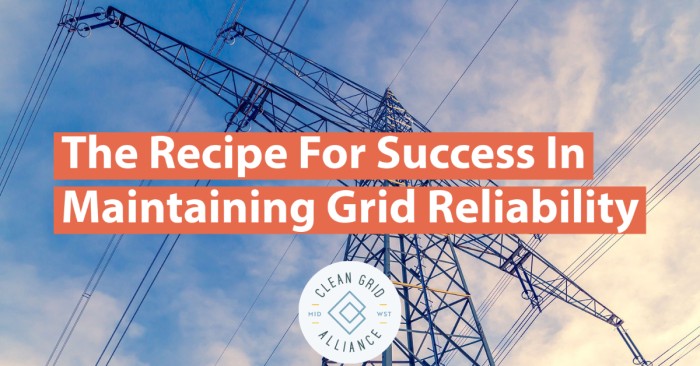The Recipe for Success in Maintaining Grid Reliability
 | Kelley Welf, Communications Director |

 | Kelley Welf, Communications Director |
On February 8, 2021, Cotton, Minnesota was the coldest place in the entire lower-48 states with a temperature of -43. Two years ago, the same town saw a reading of -56. Now the state has just ended a stretch of single-digit or lower temperatures that lasted 10 days and will go down in the history books as one of the coldest February’s in 85 years.
Most of us never give the reliability of our electric grid a second thought. We expect the lights to turn on whenever we need them. But, the reliability of our electric system takes on a whole new meaning during winters in the Upper Midwest when weather reports routinely include phrases like “polar vortex,” sub-zero temperatures reflect the “high” temperature of the day, or when dangerous wind-chill warnings of -50 or even lower are in the forecast. These weather factors put a white-hot spotlight on the importance of reliability in our electric grid.
Fortunately, we have a regional integrated electric grid and a diverse energy resource mix that provides the safety-net we need during such weather extremes.
Utilities, public utilities commissions, the regional electric grid operator Midcontinent Independent System Operator (MISO), and other regulatory bodies are responsible for making sure electricity can be delivered to homes and businesses regardless of what Mother Nature throws our way.
Generation + Transmission = Reliability
The recipe for success is to balance generation resources with a robust transmission system, which will deliver the reliability we all count on. And, diversity is the name of the game. The old adage, “don’t put all your eggs in one basket,” holds true for maintaining the reliability of our electric grid, too. A variety of generation resources ensures we’re getting the most bang for our buck while meeting demand at the same time. The Midcontinent Independent System Operator (MISO) and its sister Regional Transmission Operators (RTOs or “grid operators”) like PJM, SPP, ERCOT, and others are tasked with ensuring the lights go on 24-7-365 and at the lowest possible cost.
Choosing from available resources, RTOs deploy energy resources in least-cost order until the demand is met. Wind and solar, because they are zero-fuel-cost sources, are most often chosen first to fill as much of the demand as possible before calling upon other more expensive resources to fill the gaps. With the cost of wind down 70 percent and solar costs down 90 percent in the last decade, increasing the amount of renewables we have available on the system makes good economic sense and can really help hold down the cost of electricity. Currently, the United States has enough installed clean energy to power 43 million homes.
Technological advancements in forecasting and the gradual nature of the changes in wind output enable grid operators to accommodate the variability of renewable resources. In fact, the MISO system already successfully manages 26,000 megawatts of wind capacity, and another 1,000 megawatts of solar. On February 5, 2021, MISO reached another historic wind peak of 20,348 megawatts on the system.
Subscribe to our newsletter for the latest on energy & our work
Planning and Coordination Deliver Results
While it’s true that renewable resources like wind and solar are variable, additional “back-up” generation is not required. Transmission and the integrated nature of our electric grid take care of the fact that no energy resource is available 100 percent of the time. The diversity of our grid operator’s geographical footprint also helps reduce the need for additional assets for capacity reserves because resources can be shared. After all, the wind is always blowing and the sun is always shining somewhere!
The crisis in Texas in February is a case in point. Extreme weather conditions taxed the delivery of virtually all available sources of generation creating a perfect storm of failures. Nearly 30,000 megawatts of coal, nuclear and natural gas fell off-line as a result of extreme temperatures in the entire state. Wind plant outages also reduced the amount of generation on the system by up to 2,000 megawatts. The massive increase in demand was met by catastrophic failures in the delivery system. Since Texas has its own electric power grid (ERCOT), it is more isolated from the rest of the country, making it difficult to move power from other regions of the country to help fill the gaps.
In the Midwest, the polar vortex of 2019 also included frozen piles of coal, snow on solar panels, low wind speeds, natural gas fuel shortages and mechanical problems. But, because of the Midwest’s network of transmission lines and an integrated regional electric system MISO was able to import electricity from other RTOs to avoid widespread black-outs.
Planning and coordination at the RTO level, combined with a diverse energy resource mix and transmission delivery system are paramount for keeping the lights on and the home fires burning. Fortunately, we have those systems in place and there’s still room to grow our use of renewable energy.